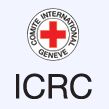
International Committee of the Red Cross (ICRC)
Comité international de la Croix-Rouge (CICR)
Comité Internacional de la Cruz Roja (CICR)
Internationales Komitee vom Roten Kreuz (IKRK)
Search Open Yearbook
This information is part of the Open Yearbook, a free service of UIA's subscription-based Yearbook of International Organizations (YBIO). It includes profiles of non-profit organizations working worldwide in all fields of activity. The information contained in the profiles and search functionality of this free service are limited.
The full-featured Yearbook of International Organizations (YBIO) includes over 77,500 organization profiles, additional information in the profiles, sophisticated search functionality and data export. For more information about YBIO, please click here or contact us.
The UIA is a leading provider of information about international non-profit organizations. The aim of the Open Yearbook is to promote the activities of international non-governmental organizations (INGOs) and intergovernmental organizations (IGOs).
Contact Details
URL: https://www.icrc.org/
Facebook: https://www.facebook.com/ICRC/
LinkedIn: https://www.linkedin.com/company/icrc/
Founded
1863-02-17 Geneva Switzerland
History
Available with paid subscription only.Aims
Protect and assist civilian and military victims of armed conflicts and internal disturbances on a strictly neutral and impartial basis.
Events
92 past events available with paid subscription only.Activities
Available with paid subscription only.Structure
Available with paid subscription only.Languages
Available with paid subscription only.Staff
Available with paid subscription only.Finance
Available with paid subscription only.Registrations
Available with paid subscription only.Consultative Status
Available with paid subscription only.Relations with Inter-Governmental Organizations
Cooperation agreement with: D-XD3030 - OAS; C-XC4129 - Organisation of Islamic Cooperation (OIC); B-XB3383 - UNESCO. Memorandum of Understanding with: E-XE3016 - UNHCR. Agreement with: D-XD0435 - Council of Europe (CE). Cooperates with: E-XE3387 - United Nations Institute for Training and Research (UNITAR). Observers include: B-XB0971 - FAO; E-XE3382 - UNDP. Follows the activities of and Permanent Observer to: E-XE3377 - ECOSOC. Observer status with: E-XK1837 - Committee of Legal Advisers on Public International Law (CAHDI); B-XB1112 - International Organization for Migration (IOM); D-XD7721 - Parliamentary Union of the OIC Member States (PUIC). Official observer of: E-XJ1672 - Pacific Islands Law Officers' Network (PILON). Guest status with: E-XC2507 - Coordinating Bureau of the Non-Aligned Countries and F-XK0563 - Non-Aligned Movement (NAM) - represented at Conference of Heads of State or Government of Non-Aligned Countries. Manages: F-XF2637 - Arolsen Archives - International Center on Nazi Persecution. Regular contacts with: E-XE2442 - European Commission (EC); B-XB3548 - WHO. Signatory to the Framework Partnership Agreement of: ECHO. Invited to sessions of Intergovernmental Council of: F-XE2379 - International Programme for the Development of Communication (IPDC). Collaborates with: C-XC1506 - International Civil Defence Organization (ICDO). Partner in: E-XE3596 - Peace Implementation Council. Represented on: E-XE4141 - International Commission on Missing Persons (ICMP). Supported the setting up of: F-XF4580 - International Criminal Court (ICC). Member of: E-XE4201 - Inter-Agency Standing Committee (IASC). Agreement with: F-XF2508 - Interparliamentary Assembly of Member Nations of the Commonwealth of Independent States (IPA CIS).
Relations with Non-Governmental Organizations
The ICRC, B-XB2907 - International Federation of Red Cross and Red Crescent Societies and the 178 National Societies constitute the F-XF2405 - International Red Cross and Red Crescent Movement. Permanent observer of: A-XA1762 - International Council of Voluntary Agencies (ICVA). Member of: F-XF6345 - Active Learning Network for Accountability and Performance in Humanitarian Action (ALNAP); G-XG0431 - Centre for Information, Counseling and Training Professions Relating to International Cooperation and Humanitarian Aid (CINFO); F-XF6980 - Digital Radio Mondiale Consortium (DRM); F-XN4518 - European Policy Centre (EPC); F-XJ3541 - Global Partnership for the Prevention of Armed Conflict (GPPAC); B-XB1766 - International Council on Archives (ICA); C-XC0047 - World Water Council (WWC). Institutional member of: E-XF2989 - Centre for European Policy Studies (CEPS). Participates in: F-XF6064 - Business Humanitarian Forum (BHF). Represented on the Organizing Committee of: E-XF4980 - Hague Appeal for Peace (HAP). Represented on the Steering Committee of: E-XM0042 - Global Humanitarian Platform (GHP). In liaison with technical committees of: B-XB2314 - International Organization for Standardization (ISO). Partner of: E-XE5021 - WorldFish. Supports: F-XF3360 - Asia-Pacific Network of People Living with HIV/AIDS (APN+); E-XE4606 - International News Safety Institute (INSI). Cooperates with: F-XF2314 - College of Europe. Instrumental in setting up: G-XF9950 - Paul Reuter Fund; U-XE8685 - Institut Henry-Dunant (IHD).
Publications
Available with paid subscription only.Members
Available with paid subscription only.Type I Classification
Available with paid subscription only.Type II Classification
Available with paid subscription only.Subjects *
UN Sustainable Development Goals **
UIA Org ID
XF1623
** UN SDGs are linked to the subject classification.
← return to your search page to find additional profiles.
UIA allows users to access and make use of the information contained in its Databases for the user’s internal use and evaluation purposes only. A user may not re-package, compile, re-distribute or re-use any or all of the UIA Databases or the data* contained therein without prior permission from the UIA.
Data from database resources may not be extracted or downloaded in bulk using automated scripts or other external software tools not provided within the database resources themselves. If your research project or use of a database resource will involve the extraction of large amounts of text or data from a database resource, please contact us for a customized solution.
UIA reserves the right to block access for abusive use of the Database.
* Data shall mean any data and information available in the Database including but not limited to: raw data, numbers, images, names and contact information, logos, text, keywords, and links.